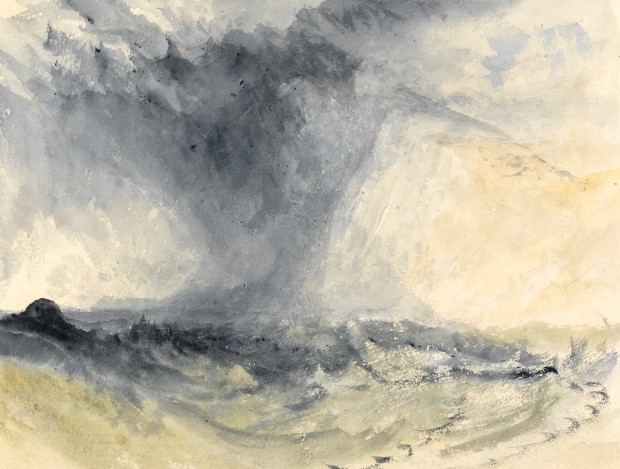I learnt to splash about in watercolour at my grandmother’s knee. Or rather, sitting beside her crouched over a pad of thickly ‘toothed’ paper and a Winsor & Newton paintbox on a wind-swept East Anglian seashore. Now, looking back, I see that what she was doing belonged to a tradition. Her predecessors, idols and reference points are to be seen in an admirable small exhibition at the Fitzwilliam Museum, Cambridge, Watercolour — Elements of nature.
This consists of works from the museum’s collection, but is much more full of delightful surprises — even for those who know the Fitzwilliam well — than that description suggests. The reason is that, while most British galleries own plenty of watercolours, you don’t often see them because they are fragile. Exposed to light, the paper turns yellow and the colours fade.
This is presumably why, although Samuel Palmer’s ‘The Magic Apple Tree’, c. 1830, is one of the Fitzwilliam’s most compelling possessions — a masterpiece of visionary rustic romanticism — it is not always to be seen on display. It is now, though, as are numerous pictures that I don’t recall ever spotting in decades of visiting the Fitz.

These are not exclusively British — the selection includes French flower painting, impressionist and post-impressionist works — but a lot of them are. Watercolour became a national speciality in the late Georgian and Victorian eras. One reason sometimes advanced for this is that watercolour is perfectly adapted to the depiction of a climate that largely consists of differing degrees of wetness.
Turner’s ‘Shakespeare Cliff, Dover’ (c. 1825) is a perfect case in point. It represents almost nothing solid. The chalk outcrop of the title is a ghostly presence consisting of a patch of white paper given form by a few faint veils of blue-grey wash.








Comments
Join the debate for just £1 a month
Be part of the conversation with other Spectator readers by getting your first three months for £3.
UNLOCK ACCESS Just £1 a monthAlready a subscriber? Log in